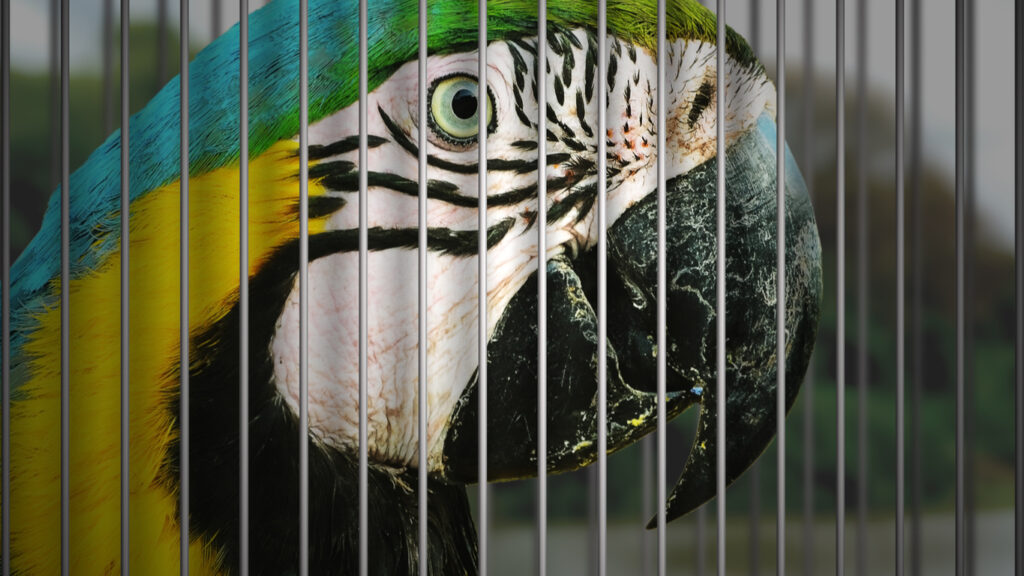
It’s not just about a few rare animals ending up in someone’s private collection. The illegal wildlife trade is one of the biggest, most dangerous threats to global biodiversity, and it’s happening on every continent. From the smuggling of exotic pets to the trafficking of animal parts used in traditional medicine or status symbols, this underground industry is wiping out species faster than many of them can reproduce. The damage goes far beyond the animals themselves, with ripple effects hitting ecosystems, communities, and even climate stability.
1. Entire species are disappearing before we understand them.
Many of the species targeted by the illegal trade haven’t even been properly studied. Some are only known to science because they were discovered on the black market. When these creatures vanish, we lose not just an animal, but everything it could’ve taught us about genetics, medicine, or ecosystems.
It’s a silent kind of extinction, happening in forests, oceans, and markets where few people are watching. And once a species drops below a certain population, it’s incredibly difficult, if not impossible, for it to bounce back.
2. Poaching breaks the food chain.
When apex predators like tigers or sharks are removed from the wild, it throws off the entire balance of their environment. Prey populations boom, vegetation gets overgrazed or overhunted, and other species suffer the fallout. Even removing smaller animals, like pangolins or turtles, can upset delicate systems. Nature’s balance relies on every species playing its part. When humans intervene for profit, those natural checks and balances start to crumble.
3. Trafficked animals often die before reaching buyers
Smuggling wild animals isn’t glamorous, it’s brutal. Birds get taped into plastic bottles. Reptiles are stuffed into socks. Mammals are kept in cages so small they can’t move. Most don’t survive the journey. For every animal that reaches a buyer, many more die along the way. It’s more than inhumane—it’s wasteful and deeply destructive. The trade isn’t preserving exotic species. It’s accelerating their disappearance.
4. Illegal trade spreads disease—fast.
When animals are captured from the wild and crammed into markets or shipping containers with others, they become walking petri dishes. Pathogens jump between species, mutate, and sometimes spill over into human populations. COVID-19 wasn’t the first wake-up call. SARS, Ebola, and bird flu all had links to wildlife trade. The next global pandemic could easily start the same way, and the more this trade spreads, the higher the risk climbs.
5. Local communities lose their natural resources.
In many parts of the world, communities rely on wildlife for ecotourism, sustainable hunting, or cultural significance. When illegal traders sweep through and remove animals for profit, locals are left with nothing but emptier forests and fewer options. What’s stolen isn’t just animals. It’s food security, job opportunities, and future income. The short-term profits of poachers come at a long-term cost to people trying to live sustainably with nature.
6. Demand fuels even more brutal practices.
The rarer an animal becomes, the more valuable it is on the black market. That warped logic drives traders to even more extreme methods—killing mothers to capture babies, using poison traps that affect other species, or bribing officials to bypass conservation zones. This cycle rewards destruction. The more endangered a species becomes, the more the trade targets it. Instead of protecting rarity, it exploits it.
7. Invasive species get introduced accidentally.
When exotic pets escape or get dumped, they don’t just vanish. They often start thriving where they don’t belong. That can be disastrous for native wildlife. Some snakes, lizards, and fish now terrorise local ecosystems after being released by overwhelmed owners. These invasive species compete for food, spread new diseases, and sometimes wipe out animals that were never equipped to handle them. A single pet gone rogue can change an entire ecosystem.
8. It undermines conservation efforts.
Conservation takes time, money, and a lot of community involvement. Illegal wildlife trade cuts through all of that. Breeding programs are derailed when animals are stolen. Habitat restoration is meaningless if the animals meant to live there are vanishing into suitcases. It’s incredibly discouraging for researchers, rangers, and locals who put in the hard work. One successful smuggling operation can undo years of progress in a matter of days.
9. Corruption and crime networks thrive off it.
Illegal wildlife trade isn’t just about poachers with snares in the jungle. It’s tied to organised crime, money laundering, and corruption at multiple levels. It’s one of the biggest illegal markets in the world, right up there with weapons and drugs. These networks destabilise governments, fuel violence, and make it even harder for real environmental protection to take hold. The effects stretch far beyond conservation. They damage societies too.
10. The loss is permanent.
When a species disappears because of human greed, we don’t get a second chance. It’s not just a matter of waiting for nature to recover. Extinction is final. The world becomes less rich, less resilient, and less beautiful every time it happens. Biodiversity isn’t just a list of species—it’s the planet’s immune system, food chain, and future. Once parts are gone, we all lose something we can’t replace.